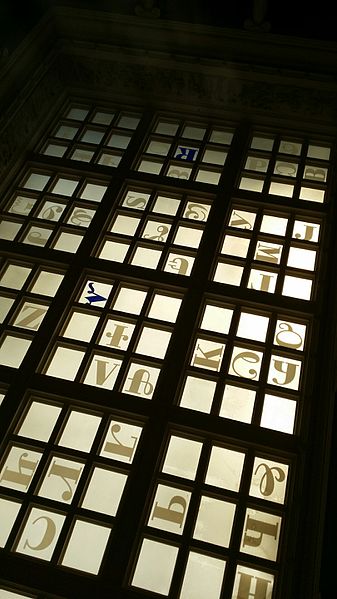The Cherokee syllabary is a syllabary invented by Sequoyah in the late 1810s and early 1820s to write the Cherokee language. His creation of the syllabary is particularly noteworthy as he was illiterate until its creation. He first experimented with logograms, but his system later developed into the syllabary. In his system, each symbol represents a syllable rather than a single phoneme; the 85 characters provide a suitable method for writing Cherokee. Although some symbols resemble Latin, Greek, Cyrillic, and Glagolitic letters, they are not used to represent the same sounds.
Sequoyah, inventor of the Cherokee syllabary
Sequoyah's original syllabary characters, showing both the script forms and the print forms
Sign in Cherokee, North Carolina
Sequoyah, also known as George Gist or George Guess, was a Native American polymath and neographer of the Cherokee Nation. In 1821, he completed his independent creation of the Cherokee syllabary, enabling reading and writing in Cherokee. His achievement was one of the few times in recorded history that an individual member of a pre-literate group created an original, effective writing system. His creation of the syllabary turned the Cherokee nation into one of the first North American Indigenous groups with a written language. Sequoyah was also an important representative for the Cherokee nation; he went to Washington, D.C., to sign two relocation-and-land-trading treaties.
SE-QUO-YAH – a lithograph from History of the Indian Tribes of North America. This lithograph is from the portrait painted by Charles Bird King in 1828.
Carnegie Museum of Art, Architecture Hall, Pittsburgh, Pennsylvania Sequoyah Alphabet
Statue of Sequoyah in United States Capitol
Sequoyah Memorial in front of the Cherokee Museum in North Carolina






